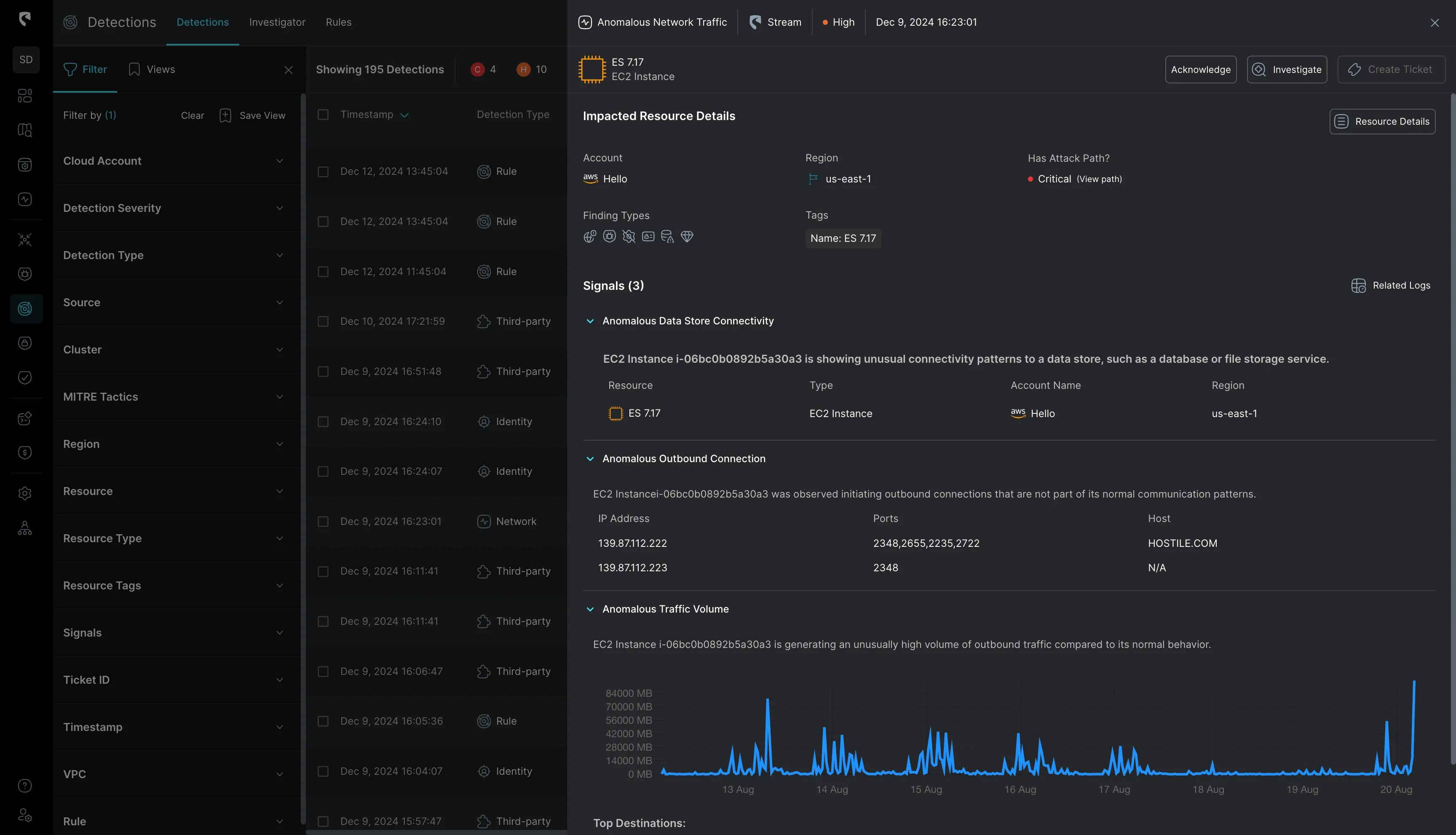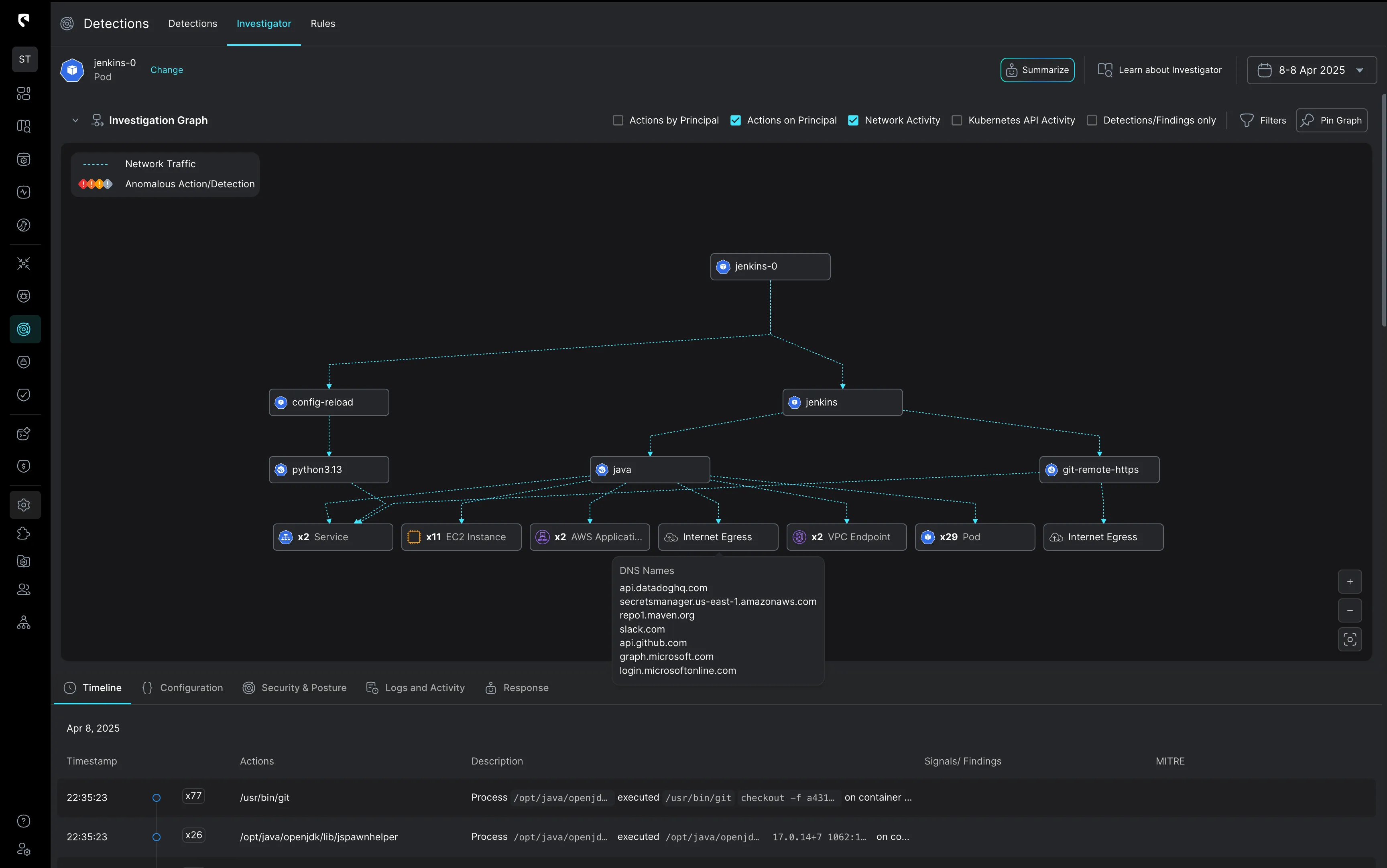
Cloud Application Detection and Response (CADR) is an emerging approach to cloud security that offers real-time protection and response capabilities. Crucially, CADR is designed specifically for Security Operations (SecOps) teams, setting it apart from other cloud security frameworks. To understand its significance, we need to examine its core components and how they compare to existing solutions, particularly the Cloud-Native Application Protection Platform (CNAPP) framework.
Cloud Application Detection and Response (CADR) is an emerging approach to cloud security that offers real-time protection and response capabilities. Crucially, CADR is designed specifically for Security Operations (SecOps) teams, setting it apart from other cloud security frameworks. To understand its significance, we need to examine its core components and how they compare to existing solutions, particularly the Cloud-Native Application Protection Platform (CNAPP) framework.
Before diving into the components of CADR, it's essential to understand how it differs from CNAPP:
CADR is built from the ground up to support SecOps teams in their day-to-day operations, focusing on real-time threat detection and response. In contrast, CNAPP is designed to harden cloud environments, focusing on vulnerabilities and misconfigurations, and is built primarily for InfoSec teams.
CDR is the cornerstone of CADR, providing comprehensive, real-time monitoring and response across cloud environments. It's an agentless cloud native threat detection solution that is easy to install and operate.
Key Features of CDR for SecOps:
1. Real-time threat detection, triage and investigation across all cloud services
2. Agentless architecture for easy deployment and minimal operational overhead
3. Continuous monitoring of cloud configurations and entitlements changes
4. Automated, real-time response actions
5. Integration with SecOps workflows and tools
6. Real-time exposure detection
The addition of real-time exposure detection is a game-changer for SecOps teams. This capability allows for:
- Immediate identification of new external attack surfaces as they are created
- Real-time alerts on misconfigurations that could lead to data exposure
- Continuous monitoring of public-facing assets and their security posture
- Instant detection of unauthorized changes to network configurations or security group rules
- Rapid response to potentially dangerous exposures, significantly reducing the window of vulnerability
This real-time exposure detection sets CDR apart from traditional security tools that rely on periodic scans. In the fast-paced cloud environment, where new resources can be spun up or configurations changed in seconds, the ability to detect exposures in real-time is crucial for maintaining a strong security posture.
A critical advantage of this real-time capability is its impact on DevOps processes. Unlike traditional systems where security issues are reported through time-consuming ticketing systems (like Jira), CDR enables immediate alerting and response:
- DevOps teams receive instant notifications about security exposures, eliminating delays associated with ticket creation and assignment.
- This immediacy allows for rapid remediation, often resolving issues before they can be exploited.
- It fosters a more collaborative and efficient relationship between SecOps and DevOps, as both teams work with the same real-time information.
- The traditional loops of creating tickets, assigning them, and waiting for responses are bypassed, significantly reducing the time-to-remediation.
- This approach aligns better with the speed and agility of cloud-native development and deployment practices.
For SecOps teams, this means:
- Reduced mean time to detect (MTTD) for potential security risks
- Ability to address exposures before they can be exploited by attackers
- Improved overall visibility into the organization's cloud attack surface
- Enhanced capability to meet compliance requirements for timely risk identification and mitigation
- Better alignment with DevOps practices, leading to more efficient and effective security operations
ADR focuses on securing cloud-native applications, offering advanced threat detection capabilities crucial for SecOps teams.
Key Features of ADR for SecOps:
1. Real-time detection of application-level (k8s) threats in cloud-native environments
2. Continuous assessment of application behavior and potential vulnerabilities
3. Context-aware threat detection, correlating application behavior with cloud infrastructure events
4. Automated response actions to application-level threats
While EDR is a well-established concept, its adaptation for cloud-based endpoints brings unique capabilities essential for SecOps in cloud environments.
Key Features of Cloud EDR for SecOps:
1. Covers both Windows and Linux workloads
2. Real-time threat detection and response on cloud endpoints
3. Integration with cloud-native security controls and APIs
4. Support for ephemeral and highly dynamic cloud workloads
A crucial aspect of CADR's effectiveness lies in the seamless integration of its components: CDR, EDR, and ADR. This integration is vital for providing the best possible outcomes in cloud security:
This deep integration of CDR, EDR, and ADR components is what sets CADR apart, enabling it to provide superior threat detection and response capabilities in complex, dynamic cloud environments.








1. Real-Time Threat Detection: CADR provides SecOps teams with immediate visibility into active threats, allowing for rapid response.
2. Integrated View: By combining CDR, ADR, and cloud-adapted EDR, CADR offers SecOps a comprehensive view of the security posture across cloud infrastructure, applications, and endpoints.
3. Automated Response: CADR's automation capabilities allow SecOps teams to respond quickly to threats, reducing the mean time to respond (MTTR).
4. Contextual Intelligence: The integration of different data sources provides rich context, enabling more accurate threat assessment and prioritization.
5. SecOps-Centric Workflows: Unlike CNAPP, which often requires collaboration between InfoSec and DevOps, CADR is designed to integrate directly into SecOps workflows and tools.
6. Focus on Active Threats: While CNAPP emphasizes potential vulnerabilities, CADR helps SecOps teams focus on active, exploited vulnerabilities and ongoing attacks.
CADR represents a significant advancement in cloud security, particularly for SecOps teams. While CNAPP focuses on hardening environments and managing vulnerabilities from an InfoSec perspective, CADR empowers SecOps with the real-time detection and response capabilities they need in increasingly complex cloud environments.
By leveraging CADR, organizations can enhance their SecOps capabilities, enabling faster, more effective response to cloud security incidents while complementing existing InfoSec-focused tools like CNAPP. The result is a more comprehensive, responsive cloud security posture that addresses both proactive hardening and real-time threat response, tailored to the needs of modern, cloud-native environments.
Stream.Security delivers the only cloud detection and response solution that SecOps teams can trust. Born in the cloud, Stream’s Cloud Twin solution enables real-time cloud threat and exposure modeling to accelerate response in today’s highly dynamic cloud enterprise environments. By using the Stream Security platform, SecOps teams gain unparalleled visibility and can pinpoint exposures and threats by understanding the past, present, and future of their cloud infrastructure. The AI-assisted platform helps to determine attack paths and blast radius across all elements of the cloud infrastructure to eliminate gaps accelerate MTTR by streamlining investigations, reducing knowledge gaps while maximizing team productivity and limiting burnout.


